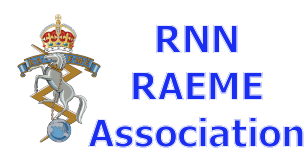The Corps of RAEME has had a short but glorious history. It was only officially established in 1942 when the repair facilities of the Ordnance Corps (AAOC) and the Service Corps (RASC) were combined to form the Australian Electrical and Mechanical Engineers Corps (AEME).
The 1st of December 1942 is generally acknowledged as the Corps Birthday because this was the date of the Order declaring the creation of AEME. In 1948 the dedicated performance of the AEME tradesman during WW2 was recognised by His Majesty King George VI when he granted the Corps the title "The Royal Corps of Electrical and Mechanical Engineers".
The Australian Army's Corps of Royal Australian Electrical and Mechanical Engineers (RAEME) provides maintenance support to the Australian Army. The Corps provides repair and recovery support for all equipment operated by the Army, including aircraft and watercraft.
In December 1981 approval was granted in principal for the Corps to be granted a banner and in November 1982 His Royal Highness, The Prince Philip, Duke of Edinburgh agreed that the Banner be known as The Prince Philip Banner. The 'Prince Philip' Banner was presented to the Corps on 20 May 1986.
A RAEME soldier is known as a 'Craftsman'. RAEME Craftsmen repair and maintain equipment as diverse as tanks, trucks and armoured personnel carriers, helicopters, radios, radars and computers, artillery guns up the students and missile systems. Among the wide range of trades available in the Corps are vehicle mechanics, electronics technicians, aircraft technicians and armament fitters.
For the purposes of identification in military radio parlance, RAEME personnel are referred to as 'Bluebells'. A RAEME Craftsman is affectionately known as a 'Crafty' - only because of the 'Oz' military trait of abbreviating everything, not because he is! (If that were the case,Crafties might be quite rightly known as Genies, as that would be an appropriate abbreviation of ingenious.
A full overview of the role of RAEME and it history can be viewed here: Corps History and Overview of RAEME














